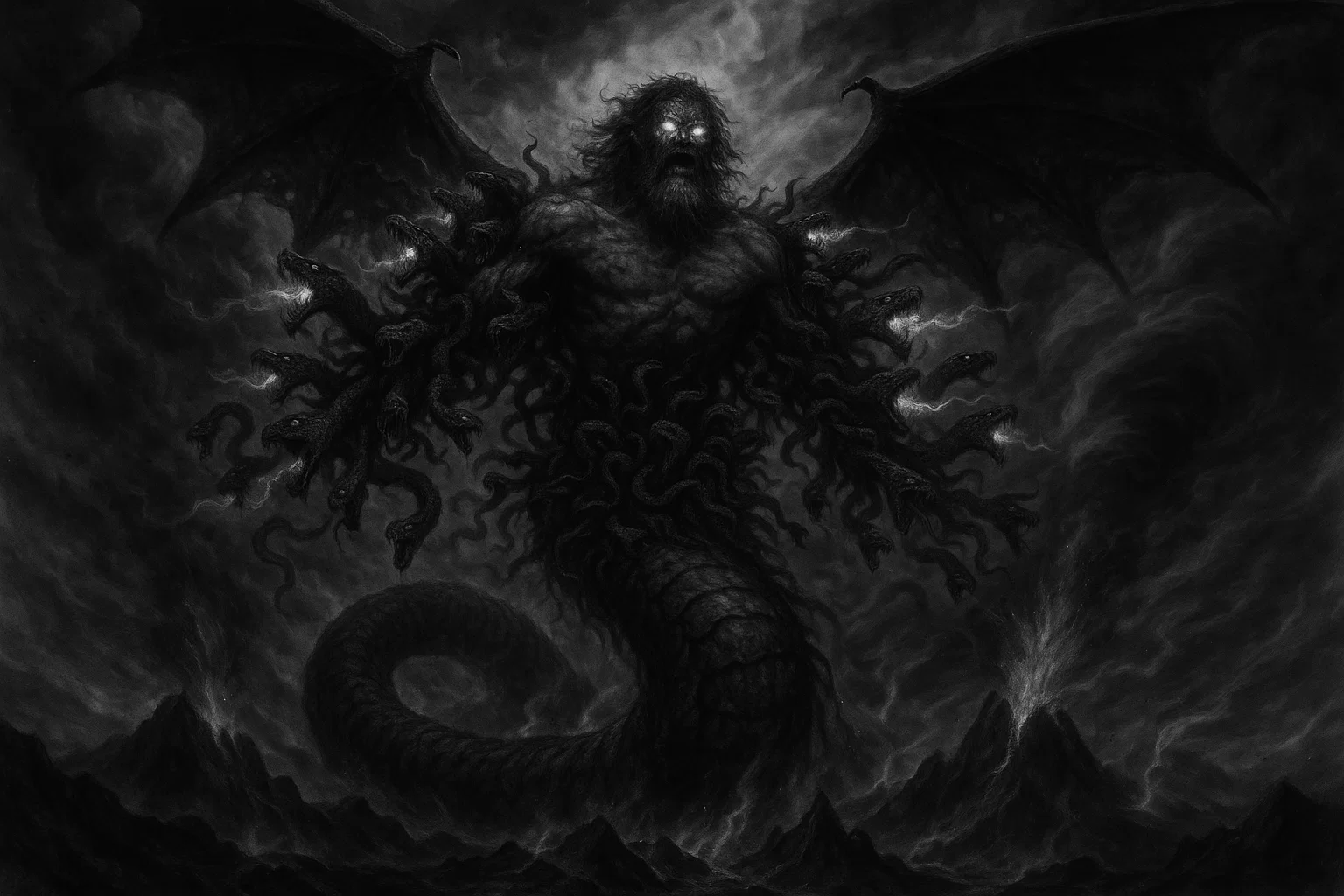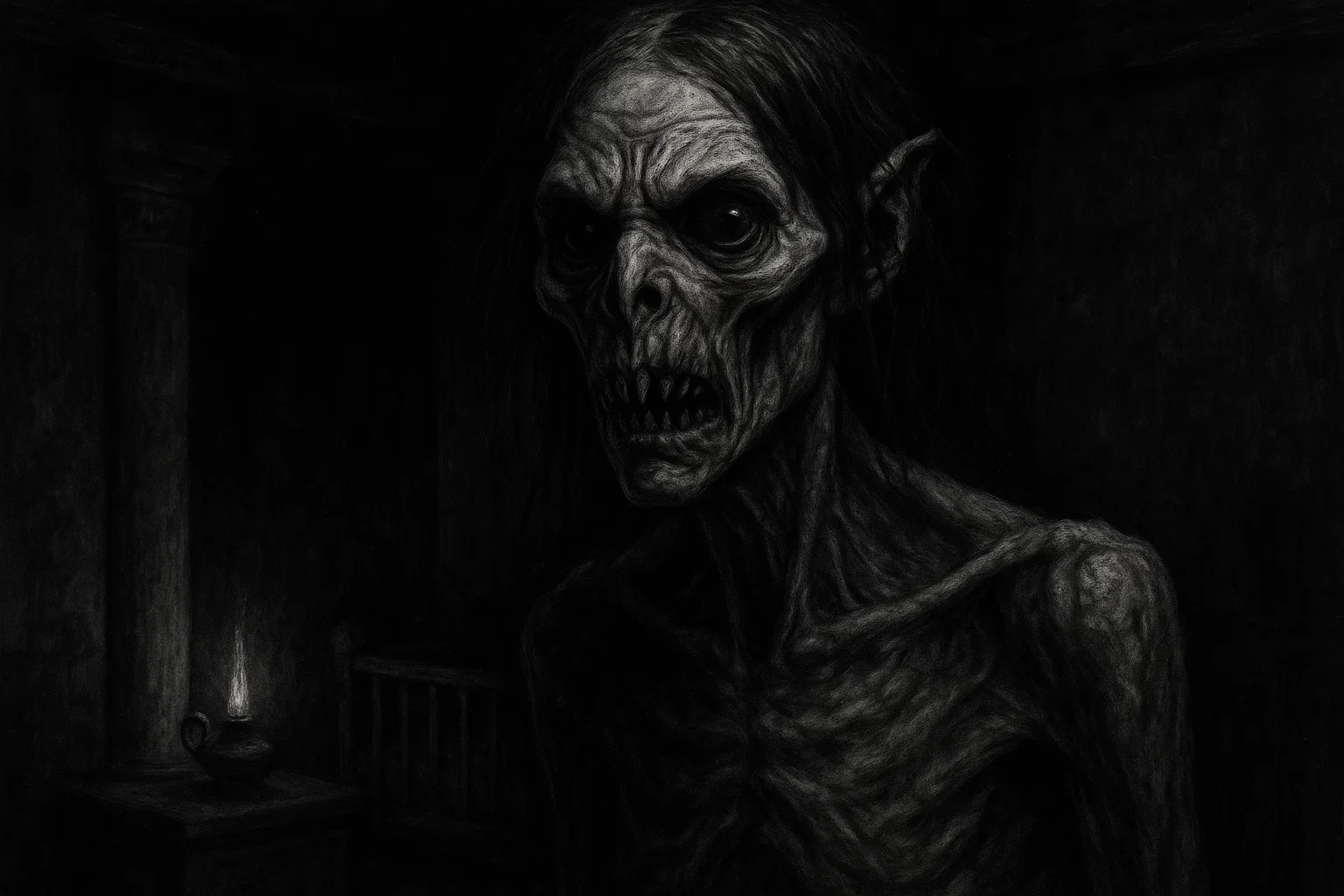Cadborosaurus (often called Caddy) is a cryptid alleged to inhabit the deep, cold coastal waters of the North Pacific. This legendary sea serpent is a central figure in the folklore of the Pacific Northwest, with stories predating European settlement.
The creature gained widespread public attention in the 1930s following a surge in sightings around Victoria, British Columbia, drawing immediate comparisons to its freshwater counterpart, the Loch Ness Monster.
An objective analysis of the existing evidence shows a highly consistent—yet scientifically unverified—description of a large, long-necked marine animal.
Summary
Overview
| Attribute | Details |
| Name | Cadborosaurus |
| Aliases | Caddy, Cadborosaurus willsi, Lizard of Cadboro Bay, Northwest Sea Serpent |
| Threat Level | Benign or evasive; documented aggressive actions only toward competing marine life, such as whales or nets (reported in the 2007 Bristol Bay sighting) |
| Habitat | Coastal Pacific Ocean waters, including deep fjords and inlets of the Pacific Northwest; reported range extends from the Gulf of Alaska down to San Francisco Bay, California |
| Physical Traits | Serpentine body with humps; estimated length ranges widely from 18 to 80 ft (5–24 m); long, thin neck (up to 4.0 m); small, highly maneuverable head resembling a camel, horse, or giraffe; large, luminous, often reddish eyes; and two pairs of purported flippers |
| Reported Sightings | Cadboro Bay, Deep Cove (Saanich Inlet), Island View Beach (BC), Naden Harbour (Queen Charlotte Islands), San Francisco Bay (CA), Nushagak Bay (Bristol Bay, AK) |
| First Documented Sighting | 1817 (European accounts); however, First Nations oral traditions and petroglyphs date back centuries |
| Species Classification | Cryptid, Unknown Aquatic Reptile (Speculative designation: C. willsi) |
| Type | Aquatic, Marine (Potentially euryhaline, capable of navigating both salt and fresh water environments) |
| Behavior & Traits | Elusive; often swims quickly in vertical loops, creating multiple humps; capable of raising its head several feet out of the water and turning 180°; nocturnal activity suggested; alleged to emit a foul, “reptile house” odor in close encounters |
| Evidence | 300+ eyewitness accounts, blurry photos, highly detailed lost photographs of the Naden Harbour carcass, amateur video (2007 Bristol Bay) |
| Possible Explanations | Misidentified giant oarfish, basking sharks, large pipefish, known marine mammal pods (seals, orcas) swimming in file, or decomposing marine carcasses (pseudoplesiosaur effect) |
| Status | Ongoing mystery; actively investigated by cryptozoologists; lacks official scientific recognition |
Who or What Is the Cadborosaurus?
The history of Cadborosaurus is defined by a clear distinction between its indigenous origins and its sensationalized introduction to modern media.
Long before the name was first published in a newspaper, First Nations people throughout the Pacific Coast maintained extensive oral traditions regarding colossal, snake-like animals in their waters, exemplified by figures such as Haietlik, a mythical lightning serpent.
Further evidence for a long-standing awareness of this creature includes coastal petroglyphs and a 1,700-year-old spear thrower (atlatl) found in the Skagit River, Washington, both of which depict animals matching the creature’s general characteristics.
The creature came to broad public attention in 1933, the same year the Loch Ness Monster became a global sensation. Archie Wills, then editor of the Victoria Daily Times, actively promoted local sea serpent reports, seeking to mirror the successful English press coverage of Nessie.
This period gave rise to the creature’s definitive name, derived from numerous sightings in Cadboro Bay near Victoria. The high-volume, media-driven coverage of that year suggests the reports were amplified by the commercial incentive to sell newspapers through sensationalism, meaning the reliability of some 1933 accounts must be weighed differently from earlier, more objective mariner log entries.
In 1995, Canadian marine biologist Dr. Edward Bousfield and oceanographer Dr. Paul LeBlond attempted to move the creature from folklore to formal science. They published a paper proposing the genus and species Cadborosaurus willsi—the specific name honoring Archie Wills.
This formal description was based on decades of compiled eyewitness accounts and secondary physical data, an effort intended to prompt the scientific community to consider the possibility of the animal’s existence.
Your Personalized, Hyper Accurate Moon & Astrology Reading
Limited time offer: Get your FREE, fully personalized Moon & Astrology Reading that takes astrology to a whole new level. Discover the secret depths of your personality, relationships, and true purpose in life.
What Does the Cadborosaurus Look Like?
Descriptions of Cadborosaurus are notably consistent across centuries, accentuating features that strongly differentiate it from known marine fauna.
The body is long and snake-like, with estimates of its total length varying dramatically, generally ranging from 18 feet to over 80 feet (24 meters). A key feature observed when Caddy swims near the surface is the formation of multiple large humps or loops, consistent with vertical undulating movement. Significantly, reports state the creature lacks a visible dorsal fin.
The neck is described as elongate and thin, capable of reaching up to 4.0 meters in length. The head is relatively small compared to the body. It is often likened to those of ungulates such as camels, horses, and giraffes.
This small head is highly flexible, reportedly capable of swiveling up to 180 degrees out of the water—an adaptation that would be highly useful for surveillance or specialized feeding near the surface. Some reports even detail short, paired, knob-like protruberances above and behind the eyes, similar to a giraffe’s ossicones.
Further distinguishing characteristics include its large, luminous eyes, which are sometimes described as reddish. The creature’s skin color is generally dark, ranging from shades of green to brown to blue.
While some reports describe a scaly or hairy exterior, Bousfield and LeBlond’s analysis proposed two pairs of flippers.
This detailed, unusual combination of a long neck, a small camel-like head with possible horns, and specialized neck mobility is optimized for reaching surface food or scouting without exposing its large body, thereby distinguishing it from common misidentifications such as seals or sharks.
You May Also Like: 10 Scary Campfire Stories That’ll Keep Everyone Awake All Night
Habitat
Cadborosaurus is fundamentally defined by its extensive, complex marine environment, setting it apart from isolated freshwater cryptids. The reported geographic range is vast, spanning the deep, cold coastal waters of the North American Pacific, from Nushagak Bay in Bristol Bay, Alaska, south along the coast of British Columbia, and occasionally as far south as San Francisco Bay, California.
This immense range implies the animal is highly migratory and capable of surviving across a wide spectrum of oceanic conditions, suggesting rarity rather than isolation.
The highest concentration of sightings occurs within the inlets and fjords of British Columbia, especially around Vancouver Island, including Deep Cove in Saanich Inlet and Cadboro Bay. These areas are characterized by deep, glacially carved basins and nutrient-rich currents, providing ample space for a large, shy animal to feed and remain concealed.
The sheer size of this potential habitat exponentially increases the difficulty of discovery. Yet, it provides the ecological support necessary to sustain a population of large, rare animals.
The frequent comparisons of Caddy to the freshwater lake monster Ogopogo, also located in British Columbia, and the discovery of a Caddy-like artifact in the Skagit River, Washington, suggest that the creature may possess euryhaline capabilities. This means it could potentially navigate and survive in both salt and brackish waters, allowing it to traverse large river estuaries and access various coastal refuges.
Cadborosaurus Sightings
Reports of Cadborosaurus date back to the 19th century, predating the creature’s modern namesake, and exhibit a remarkably consistent morphology across diverse geographical locations. There have been over 300 claimed sightings over the past 200 years.
| Date (Approx.) | Location | Witness/Source | Key Description (Appearance/Behavior) | Encounter Type |
| 1881 | British Columbia Coast | Experienced Captains/Sea-farers | Massive serpentine animals; reports recorded in ship log books. Geographical range: Alaska to Oregon. | Visual Sighting (Historical) |
| August 1, 1891 | Victoria, BC | Daily Colonist | Archival record of a sea serpent report. | Archival Record |
| January 13, 1897 | Victoria, BC | Daily Colonist | Archival record of a sea serpent report. | Archival Record |
| April 14, 1903 | Victoria, BC | Daily Colonist | Archival record of a sea serpent report. | Archival Record |
| August 30, 1908 | Victoria, BC | Daily Colonist | Archival record of a sea serpent report. | Archival Record |
| January 1, 1911 | Victoria, BC | Daily Colonist | Archival record of a sea serpent report. | Archival Record |
| June 17, 1911 | Victoria, BC | Daily Colonist | Archival record of a sea serpent report. | Archival Record |
| July 27, 1911 | Victoria, BC | Daily Colonist | Archival record of a sea serpent report. | Archival Record |
| 1926 | Victoria, BC | Daily Colonist | Archival record of a sea serpent report. | Archival Record |
| August 25, 1926 | Victoria, BC | Daily Colonist | Archival record of a sea serpent report. | Archival Record |
| August 1932 | Cadboro Bay, Victoria | F.W. Kemp (Provincial Library Official) | Reported sighting one year prior to the major media wave. | Visual Sighting (Pre-Fame) |
| October 1933 | Chatham Island, BC | Major W.H. Langley, R.C. Ross, F.W. Kemp | Dark greenish brown, dome-like back, serrated marks. Size of a large whale, seen 100 ft away. | Visual Sighting (Classic) |
| Judge Brown | Victoria, BC | Judge James Thomas Brown | Observed Caddy from less than 150 yards. | Visual Sighting |
| Summer 1936 | Gonzales Bay, BC | Witness and Sister | Only a sketch was mentioned; implies visual detail was captured. | Visual Sighting |
| July 1937 | Naden Harbour, Queen Charlotte Is. | Whaling station workers (Flensers) | 3-4 meter juvenile specimen found in a sperm whale stomach. Horse/dog-like head, serpentine body, short feathered tail. Photographs taken. | Carcass/Physical Evidence |
| 1956 | Dry Harbour, Yakutat, Alaska | Anonymous (Reported by Kincaid) | 100-foot (30 m) long carcass with 2-inch hair. (Later identified by Clemens as a Baird’s beaked whale). | Carcass (Misidentified) |
| April 1962 | Ucluelet, BC | Simon Peter | 14-foot carcass with elephant-like head. (Later thought to be an elephant seal). | Carcass (Misidentified) |
| September 1963 | Oak Harbor, Whidbey Island | Anonymous | Carcass found with a head resembling a horse. (Later thought to be a basking shark). | Carcass (Misidentified) |
| 1984 | Telegraph Bay, Victoria | Ryan Green, Damian Grant | Snorting, 20-foot long, twin-humped, round-bodied creature. Swam across the bay like a snake doing the breast stroke. | Visual Sighting |
| Summer 1987 | Backers Pass (Cortez/Hernando Is.) | Experienced boater | Giraffe-like head with small horns, head/neck 6 ft out of water. Large, visible humps. Arbutus tree color. Observed muscle movement. | Visual Sighting |
| 1994 | Cadboro Bay | Michelle Boyer (UVIC sailing club) | Dark olive green, slimy, elongated body like a snake. Seen in the middle of the bay. | Visual Sighting |
| July 1994 | Roberts Bay (Just outside) | Experienced wildlife cruise runner + 5 companions | Blackish-green, “ugly,” wide girth. Large head and neck rose vertically 10 ft high, remained for 40 seconds. | Visual Sighting |
| 1996 | Victoria, BC (General area) | Multiple reports | Over a dozen sightings recorded throughout the year. | Cluster of Sightings |
| July 20, 1998 | Oak Bay Marina (Outside) | Witness + fishing companion | Two large animate objects moving very fast and in unison. Distinctly “not seals”. | Visual Sighting |
| June 8, 1999 | Deep Cove, BC | Witness + Wife | Swimming object described as “truck tire thick.” Emerged three times; head observed looking away. | Visual Sighting |
| Late June 1999 | Ardmore Point, BC | Anonymous | Head (1×2 ft) with cat-like iris seen on land. Tail with two flippers disappearing into the water. Noticed foul odor and a trench dug in the beach. | Close Sighting (Terrestrial) |
| July – August 1999 | Mill Bay docks | Witness + Son | Horse-like but shorter head, followed by three humps, leaving a wake in flat calm water. Traveled in a straight path. | Visual Sighting |
| August 1999 | Indian Island, BC | Witness + Girlfriend | Long, thin dark grey object protruding 3 ft. Reptilian-like head (1 ft long) and visible humps/bumps below the surface. | Visual Sighting |
| Late Aug 1999 (Dusk) | Victoria Telegraph Bay | Commercial fishing veteran | Approximately eight “big tires popping up suddenly, everywhere.” Disappeared and reappeared quickly, estimating high speed. | Visual Sighting |
| August 16, 2010 | Finn Slough, Richmond, BC | John Kirk (BCSCC President) | Direct visual confirmation by a prominent cryptozoology researcher. | Visual Sighting |
Awaken XT is unlike anything you’ve ever tried before…
…it’s based off a closely guarded formula that’s said to be able to supercharge your pineal gland and help you access your untapped inner power. With it’s unique blend of extremely hard to source ingredients, Awaken XT helps support the healthy functioning of your pineal gland, as well as your other organs in your body.
The Naden Harbour Carcass (1937)
The most compelling piece of physical evidence—albeit one that was ultimately lost—was the carcass discovered in the stomach of a sperm whale at the Naden Harbour whaling station in the Queen Charlotte Islands, British Columbia.
Whalers confirmed that the specimen was not a fetal whale or any known fish species. It possessed a small, horse-like head, an elongated neck, and purported flippers, matching the snake-like descriptions of the Northwest sea monster.
Photographs and detailed sketches were produced by the whalers. Sadly, the specimen was unfortunately lost during its transit to researchers for official study.
Cryptozoologists maintain that the detailed documentation of this recovered specimen, which survived digestion, confirms the existence of an unknown species.
You May Also Like: New Mokele-Mbembe Sightings, Theories & Evidence
The Backers Pass (1987)
A detailed report from a boater in the summer of 1987 near Backers Pass, between Cortez and Hernando Islands, is considered very important because it provides specific information about what was observed.
Initially, the boater thought they were looking at a big tree trunk sticking out of the water. But then the creature moved, and the witness described seeing a head that resembled a giraffe’s, with small horns, rising about six feet above the water’s surface.
The observer also noticed that the animal’s muscles moved beneath its skin as it swam quickly. This clear movement of muscles suggests that it wasn’t just a piece of debris, a log, or an animal that was already dead floating in the water.
The Ardmore Point (1999)
In late June 1999, an unusual incident occurred at Ardmore Point that caught attention after a strange creature was seen partially on land. A single observer nearly bumped into the beast, which was about one foot wide and two feet long.
This person noticed that the creature had eyes that looked similar to a cat’s. When startled, the animal quickly moved away, leaving a noticeable trench in the sand as it dived back into the water, flaunting a tail with flipper-like features.
Interestingly, the observer also mentioned a strong, unpleasant smell in the air, likening it to the scent of a reptile exhibit at a zoo. The combination of the peculiar eye, the foul odor, and the physical traces it left suggests that this creature might have a unique, semi-aquatic form that doesn’t quite match any known sea animals or fish.
The Bristol Bay Video Footage (2007)
The most significant modern evidence for Cadborosaurus is the video footage captured by fisherman Kelly Nash and his crew in Nushagak Bay, Bristol Bay, Alaska, in June 2007.
The video shows a pod of approximately 20 animals swimming closely together, moving with a noticeable vertical, undulating motion.5 This suggests the presence of a self-sustaining population, not just a singular individual.
The clearest sequence, though brief, captured one of the larger animals raising its head and neck out of the water, revealing a camel-like head, forward-facing bulgy eyes, and a serrated back.
Researchers immediately recognized that these features were consistent with descriptions given decades earlier, including sketches made of the 1937 Naden carcass.
Despite the high quality of certain segments, the full, stabilized footage containing the clearest head-and-neck sequence was reportedly recorded over after being sold to a television production company, maintaining the frustrating pattern of critical evidence being unavailable for independent scientific scrutiny.
Evidence & Investigations
The rigorous pursuit of Cadborosaurus has been driven primarily by cryptozoologists attempting to apply formal scientific methods to anecdotal data.
The foundation of this investigation rests on the work of Dr. Paul LeBlond and Dr. Edward Bousfield, who published a systematic analysis of reports in 1995 that detailed consistent morphological patterns. They relied on the statistical weight of hundreds of consistent eyewitness accounts to build the case for the new species, C. willsi.
The most powerful supporting evidence remains the lost physical proof: the 1937 Naden Harbour carcass photographs and the accompanying documentation. These records provided the morphological basis for the creature’s scientific description, despite the specimen itself being missing.
Supporting this are various forms of secondary evidence, including the 2007 Bristol Bay video, which correlates new data with old, and cultural artifacts like petroglyphs and the ancient Skagit River atlatl, which show the animal was known regionally for centuries.
The attempt to formally classify C. willsi, however, met with resistance from the mainstream scientific community. The key objection was the absence of a holotype, the designated physical specimen required for the official description of any new species.
Reviewers argued that no amount of anecdotal evidence or interpretation of blurry photos could substitute for verifiable, measurable physical remains.
Dr. C. McLean Fraser, a prominent zoologist in the 1930s, articulated this impasse, stating that serious progress cannot be made “until someone gets a lasso around one of these things”.
The loss of the 1937 carcass fundamentally derailed formal scientific classification, leaving Cadborosaurus as a statistically compelling but unproven cryptid.
You May Also Like: Beast of Bray Road: Wisconsin Creepiest Cryptid?
Theories
Explanations for Cadborosaurus sightings typically fall into one of three categories: the survival of an unknown species, the misidentification of known animals, or the illusion created by decaying matter.
Undiscovered Basilosaurid or Primitive Reptile
This core cryptozoological explanation posits that Cadborosaurus represents a relic population of an ancient marine animal, adapted to the deep Pacific.
Supporters of this theory believe that Cadborosaurus might be related to large reptiles or an ancient group of whales called Basilosauridae. These Basilosaurids were long, whale-like animals that swam uniquely, creating waves and rising and falling as they moved—similar to how witnesses have described Cadborosaurus moving with multiple humps.
This theory suggests that the reason Cadborosaurus is rarely seen is that it lives in deep or hard-to-reach areas of the ocean, where it can thrive by feeding on abundant food sources, such as salmon during their migration.
Misidentification of Known Marine Megafauna
Skeptics emphasize that many large, known marine animals, when observed at a distance or in specific conditions, can convincingly mimic the shape and movement of a sea serpent:
- Basking Sharks and Oarfish: The Basking Shark, the second-largest fish species, is often seen feeding near the surface. When only its prominent dorsal fin and the upper lobe of its caudal fin are visible in a line, the intervening submerged body can appear as a series of humps or a single, extremely long, snake-like creature. Similarly, the Giant Oarfish, a highly elongated fish that can reach 11 meters, is occasionally sighted at the surface and can easily be mistaken for a serpent.
- Synchronized Pods: The numerous reports of multiple humps are often attributed to groups of common marine mammals, such as sea lions, dolphins, or even whales, swimming in a tight, synchronous line. As their backs break the water in sequence, the effect is the perception of one continuous, undulating monster.
The Pseudoplesiosaur Effect
This theory offers a rational explanation for the rare instances of physical evidence, such as the Naden Harbour carcass.
The pseudoplesiosaur effect occurs when the soft tissues of a deceased marine creature—such as a large shark, whale, or ray—decay differentially. This leaves behind a tough, connective structure composed mainly of the spinal column and skull elements, which can misleadingly resemble a creature with a small head and a long neck, mimicking the appearance of an extinct plesiosaur.
Given that the Naden carcass was found in the stomach of a sperm whale, its decomposition and deformation were likely accelerated, potentially resulting in a highly misleading form.
Comparison with Other Similar Cryptids
Cadborosaurus shares many traits with other snake-like or long-necked aquatic cryptids worldwide. Still, its distinct marine habitat separates it from the majority of freshwater lake monsters that dominate this field of study.
| Cryptid | Habitat | Key Trait | Classification/Analogue |
| Loch Ness Monster (Nessie) | Loch Ness, Scotland (Freshwater) | Large, long-necked, one or more humps, dark color; famously brought to attention in 1933 | Plesiosaur analogue |
| Ogopogo | Okanagan Lake, BC, Canada (Freshwater) | Snake-like, smooth dark skin, up to 15 m; moves by vertical undulations; body thicker than a telephone pole | Basilosaurid analogue |
| Champ | Lake Champlain, NY/VT, USA (Freshwater) | Snake-like body, long neck, humped back; 20 ft long; horse-like head | Lake Monster |
| Gloucester Sea Serpent | Gloucester Harbor, MA, USA (Marine) | 60–90 ft long, black, shiny, body composed of keg-sized humps; moves with a caterpillar-like wiggle | Classical Sea Serpent (Maritime) |
| Nahuelito | Nahuel Huapi Lake, Patagonia, Argentina (Freshwater) | Giant serpent or huge hump; described as either long-necked or purely serpentine | Plesiosaur analogue |
| Mokele-mbembe | Congo River Basin (River/Swamp) | Sauropod-like, long neck, elephant-sized body, small head, herbivore; tracks show three claws | Sauropod analogue |
| Morag | Loch Morar, Scotland (Freshwater) | Snake-like head, very small compared to the neck; dark, smooth skin; noted for extreme elusiveness | Lake Monster (Scottish) |
| Issie | Lake Ikeda, Japan (Freshwater) | Massive lake monster; often compared directly to Nessie in Japanese folklore | Lake Monster |
| Altamaha-ha | Altamaha River, Georgia, USA (Brackish/Marine) | Serpentine, dolphin-like head; reported in the brackish marsh and estuary system | Brackish/Coastal Serpent |
| Alaskan Serpent | Gulf of Alaska (Marine) | General term for unknown serpent-like creatures in northern waters, often tied to Caddy reports in Bristol Bay | Regional Sea Serpent |
You May Also Like: What Is the Katshituashku—Man-Eating Monster or a Mastodon-Type Cryptid?
Is Cadborosaurus Real?
The mystery of Cadborosaurus continues to capture our imagination, highlighting how much we still don’t know about the deep ocean. There are intriguing arguments supporting the idea that this creature might really exist, largely based on a wealth of sightings and consistent descriptions over the years.
For more than 200 years, over 300 people from different places have reported seeing a strange creature with is long neck, a hump on its back, and a head that reminds some of a camel or a giraffe. These consistent details—along with accounts of a foul smell and the creature’s movement—suggest that witnesses may be seeing something distinct from known sea animals.
However, proving that Cadborosaurus exists has been challenging because no one has been able to provide a specimen—a physical sample or body—for scientists to study. The loss of a body in 1937 was a significant blow to those who believe in its existence, making it even harder for this creature to gain formal recognition in the animal kingdom.
Without clear evidence, scientists often dismiss these sightings, suggesting that what people are actually seeing may be misidentified creatures, like basking sharks or giant oarfish, or even decaying whale carcasses. Thus, the default explanation continues to lean toward these more common sea life rather than the elusive Cadborosaurus.









